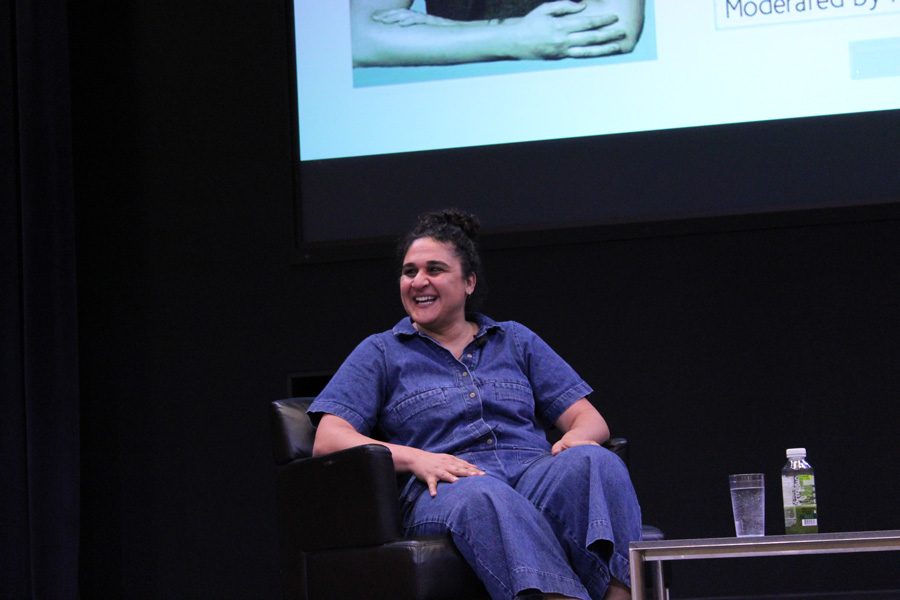Cookbook author and host Samin Nosrat aims to tell stories through food
Zoe Malin/The Daily Northwestern
Samin Nosrat speaks in the McCormick Foundation Center auditorium. Her first cookbook, “Salt, Fat, Acid, Heat: Mastering the Elements of Good Cooking,” has been adapted into a Netflix show.
May 2, 2019
Despite having a bestselling cookbook, New York Times Magazine food column and Netflix show under her belt, Samin Nosrat is still figuring out how to make lunch.
“I never had that period of life where you have to figure out how to feed yourself after you get home from your first job,” Nosrat said. “I went straight from quesadillas to three-course meals. It was very confusing for my head. When I left restaurants in 2009, I was 30 and I had to acclimate for the first time as a person who came home and had to figure out what to eat for dinner.”
Nosrat, who grew up in California as the daughter of Iranian parents, started her cooking career after college at the award-winning restaurant Chez Panisse in Berkeley. Since then, she has been working as a food writer, author and host. Her first cookbook, “Salt, Fat, Acid, Heat: Mastering the Elements of Good Cooking,” won the James Beard Award in 2018, and was adapted into a Netflix show that October.
Speaking to a full auditorium Thursday evening at the McCormick Foundation Center, Nosrat shared her background in cooking and her approach to food as part of the Contemporary Thought Speaker Series. The conversation was moderated by Mike Sula, the chief food critic for the Chicago Reader.
Nosrat said she is a firm believer that cooking is not a “talent,” but a skill acquired through practice and awareness. Her book, which features simple recipes and illustrated charts — there is a “Powers of Pie” chart that zooms in on different crust constructions and a “Pasta Nostra” family tree for the major sauces, among others — is meant to get people to think critically about ingredients and flavor.
“If I had had it my way, I would have included no recipes in the book,” Nosrat joked, “but there was no way a book (like that) was going to be published.”
Her Netflix show goes one step further, as Nosrat travels to Italy, Japan and Mexico to introduce viewers to traditional methods for preparing foods — including soy sauce, parmesan cheese and acidic honey — and home in on the importance of using different flavors to “put taste first” and improve a dish.
Nosrat said she wants viewers to come away with a new eye for flavor, and a healthy dose of inspiration, but also an appreciation for the tradition and generations of craftsmanship that goes into making each ingredient and dish she features.
Since the show premiered, Nosrat said many of the foods she spotlighted, which have been made available through an online site, sold out.
Many of the show’s subjects are women — who were the primary cooks in society for thousands of years, until the invention of restaurants and professional chefs turned cooking into a male-dominated field — and Nosrat said she was intentional in spotlighting them, in part to reclaim the history of female cooking.
All through the show, Nosrat aims to tell stories and create space for representation through food. She spoke about cultural appropriation within food and cooking, as well as reframing cooking as something accessible and innate.
“You approach cooking with such confidence and ease,” Sula said to Nosrat during the discussion. “That’s the inspiring thing about the show. No matter what your experience is in the kitchen, (after watching it) you just want to cook.”
Email: [email protected]
Twitter: @kristinakarisch


